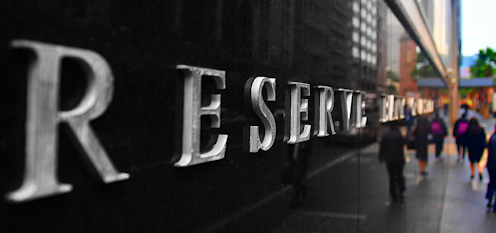Reserve Bank to have two boards after overhaul by inquiry
- Written by Michelle Grattan, Professorial Fellow, University of Canberra

The long-awaited independent review of the Reserve Bank commissioned by Treasurer Jim Chalmers will be released on Thursday, with the treasurer already flagging in-principle agreement with all its recommendations.
These include separating decisions about monetary policy from other decisions by establishing a separate Monetary Policy Board and Governance Board, with the aim of making both decision-making and governance arrangements as effective as possible.
Asked to examine the continued appropriateness of the Reserve Bank’s inflation targeting framework, the review has apparently offered endorsement, with the treasurer expected to say on Thursday he reaffirms the government’s commitment to both the independence of the Reserve Bank and its inflation-targeting framework.
Titled “An RBA fit for the future[1]”, the report makes 51 recommendations under 14 broader headings.
The review has been carried out by Carolyn Wilkins, an international expert on monetary policy, Renée McKibbin, a professor of economics at Australian National University, and Gordon de Brouwer, Secretary for Public Sector Reform.
Read more: The RBA's failure to cut rates faster may have cost 270,000 jobs[2]
Among the issues the review has considered are how to improve its approach to monetary policy, the bank’s decision-making, its performance against its objectives, how well it explains its decisions, and the composition of its board.
Chalmers will announce on Thursday two new RBA board members, to replace retiring members Wendy Craik and Mark Barnaba.
Some of the review’s recommendations will be implemented by the bank itself.
Others will need legislation, work with the Council of Financial Regulators, or agreement on a new Statement on the Conduct of Monetary Policy[3] to be signed by Chalmers on behalf of the government and Governor Philip Lowe on behalf of the Reserve Bank board.
Chalmers has stressed the need for bipartisan support for the changes, given the bank’s independence and its importance in Australia’s economic policy-making.
He has discussed the report with Shadow Treasurer Angus Taylor, and provided him with an advance copy. Taylor had briefings from the panel during its inquiry.
Chalmers this week praised Taylor for the way he had engaged with the review.
Arguing for bipartisanship, Chalmers told a news conference on Monday:
We don’t really want to run the gauntlet in the Senate, for example, on legislative change to the RBA Act. The RBA Act should be something that we can agree on and put beyond politics.
The review panel received more than 1500 contributions through interviews, submissions, focus groups and survey responses.
It consulted 137 global and domestic experts, including current and former RBA board and staff members, parliamentarians and academics. It also consulted representatives of business, unions, public institutions and community groups.
Read more: The RBA is not a law unto itself — an external review would do it good[4]
The bank and Lowe in particular have come under criticism as rates have risen.
Lowe has been under fire for indicating the cash rate would likely not increase before 2024, which influenced the decisions of some house buyers.
Lowe’s term expires in September.
References
- ^ An RBA fit for the future (ministers.treasury.gov.au)
- ^ The RBA's failure to cut rates faster may have cost 270,000 jobs (theconversation.com)
- ^ Statement on the Conduct of Monetary Policy (www.rba.gov.au)
- ^ The RBA is not a law unto itself — an external review would do it good (theconversation.com)
Read more https://theconversation.com/reserve-bank-to-have-two-boards-after-overhaul-by-inquiry-204122













